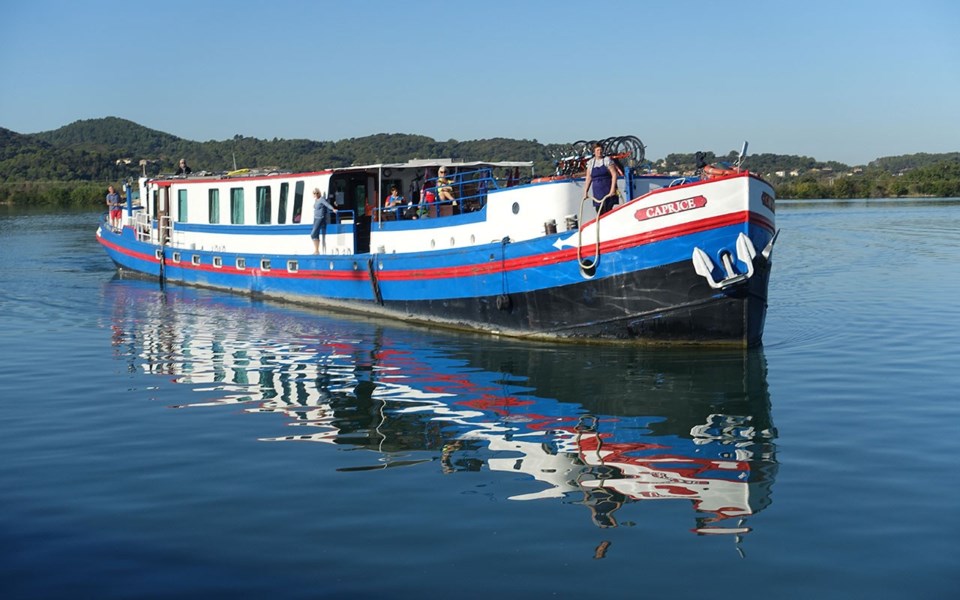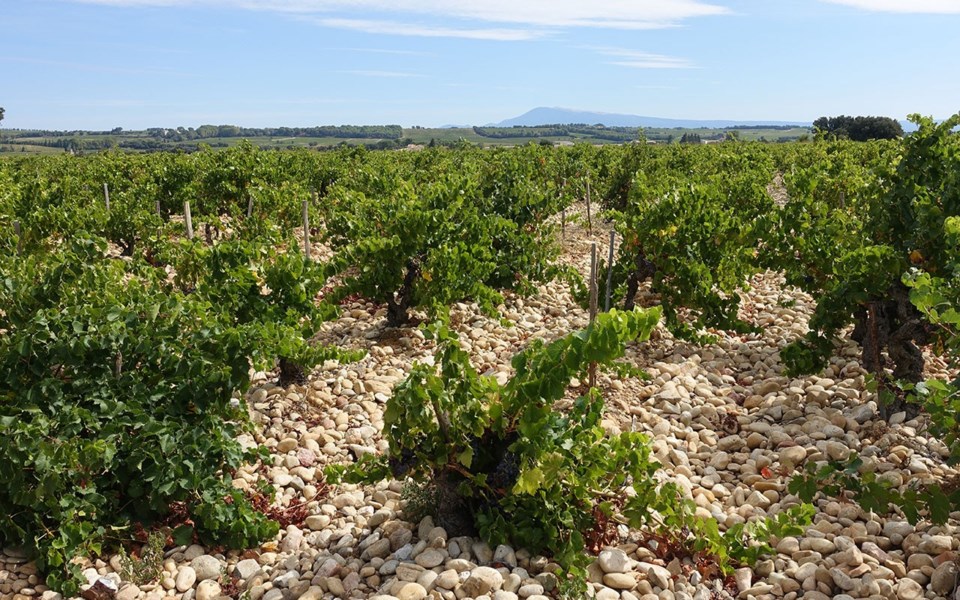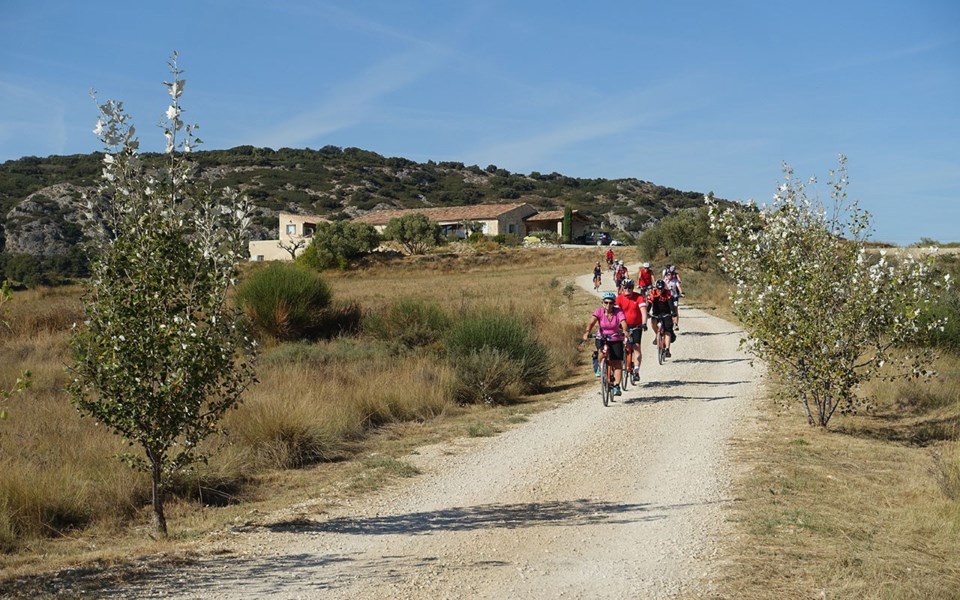
For several decades during the Middle Ages, Avignon was the capital of Christendom. The result is a legacy of opulent churches, chapels, convents and monuments in the middle of a walled Old Town.
This is our embarkation point for a week-long bike and barge trip through Provence and we've arrived early to get over jet lag. My husband and I flew into Charles de Gaulle, where we met my sister. We soon realize that rail travel and bike boxes don't pair well as we lug our baggage up and down steep stairs between platforms, struggle to find stowage space on the trains and have difficulty finding cabs big enough for our bikes.
So, we're a little frazzled when we get dropped on a corner in Old Town where the apartment we've booked is on a pedestrian-only street. Luckily our host finds us, whisks us to a medieval building, through big wooden doors and, grabbing one of our bags, leads us up a narrow, curving staircase to a huge apartment with tall windows and wrought iron balconies. She settles us in, gives us excellent resto recos and leaves us to enjoy our three days here.
My husband takes on the ascent of Tour de France's Mont Ventoux – 1,912 metres in 23 kilometres with an average grade of 7.5 per cent. On the descent, both of his carbon wheels melt and the tires are trashed. Kind locals stop and somehow manage to stow him and his bike into their tiny Renault and take him to a bike shop.
Blissfully unaware of this drama, my sister and I wander charming streets within the 14th C walls. Palais de Popes sits atop the highest point in Avignon, a white granite majesty that rivals St. Peter's Basilica in Rome, built when Clement V, elected Pope in 1305, refused to move to Italy. He set up the papal capital in Avignon because he was distressed by factionalism in Rome and under pressure to remain in France by the king. This is where the papacy remained, through seven popes (all French) until 1377, when Gregory returned it to Rome.
Having absorbed religious and political history, it's time for a change of pace: shopping. We try on clothes in several sleek boutiques. How is it that French women can—with a pouf of fabric here and a tug of a sleeve there—make any dress look wonderful? Except for a Little-House-on-the-Prairie pink frilly smock, which the sales lady labels "romantic," but I know is better described as "the doily that ate my body" as I look in the changing room mirror.
All too soon it is time to board our barge, the rather scruffy Caprice. The boat we were supposed to have sunk (we see the hull sticking out of the river later on our trip) and I suspect they dusted off Caprice from retirement. My husband and I can barely turn around in our tiny cabin with its two teeny beds. A thick wedge of plastic serves as the "door" to the miniscule loo and there are dead flies around the small porthole.

Fortunately, we don't spend much time inside. The next morning our vivacious bike guide, Daniella, takes us on a 45-kilometre ride through deciduous forests and fruit orchards; across the Rhone; beside fields of pumpkins, flamboyant dill and sunflowers hanging their heavy heads, spent for the season; and through the gnarly, low-slung vineyards of Châteauneuf-du-Pape, where we stop for some tastings.
My sister, a certified sommelier, is delighted to fondle the pudding stones— —that top the terroir here. The stones absorb heat during the day and keep the vines warm through the night. The other helpful feature is the Mistral, which acts as a natural pesticide.
My husband and I are on light road bikes while all the others ride heavy-weight hybrids so we are cycling very, very slowly. This doesn't bode well for my caloric burn, which I would like to be high to better enable me to indulge in the Provencal cuisine that I am expecting. Alas, I need not worry. Our cook is British and feeds us mediocre curries, unidentifiable fish, overcooked beef.
Fortunately, the 20 people on the trip with us, most from Vancouver, are lively, intelligent and full of bon humour about the "cuisine." And there is no lack of wine on board, including many bottles of very nice Côtes du Rhône rose.
The next morning, we leave Avignon for another day of cycling through tiny villages, across busy bridges (with ultra-narrow sidewalk lanes with large drops to the roadway, which tends to focus the riding mind) and along lanes lined by huge Sycamores, with artistic trunks and elegant limbs.

We stop for lunch (which we make ourselves each morning from an unimaginative buffet of cheeses, meats and breads) at Pont du Gard—a Roman monument built in 1st century AD. It is a three-level aqueduct standing 50m high and allowed water to flow 50 kilometres across the river to Nîmes. Roman architects and hydraulic engineers created a technical masterpiece that took 1,000 workers to build. It is a work of art. My husband and I swim in the clear, icy cold river below the aqueduct.
More cycling takes us to a boutique olive oil mill. The owners explain the process: from "combing" the olive trees (by hand with an implement that resembles a big comb) to pressing the olives (pits and all) to achieve the "virgin" designation. The waste goes to fertilize the vines and to feed "combat bulls" who will "eat anything, including small children."
As a boutique olive oil house, they make a fraction of the production that houses in Spain, Italy or Greece would produce. By the way, the owners say "first press" can no longer be sold because it doesn't meet safety regulations. If you see that term on a bottle, it's a marketing ploy.
We meet up with the barge at Aramon, where we sit on deck with some wine to joke about what cook will serve for dinner and hear Daniella tell us about tomorrow's ride.



